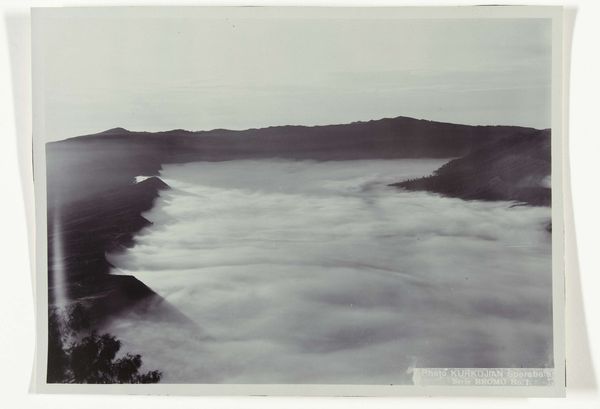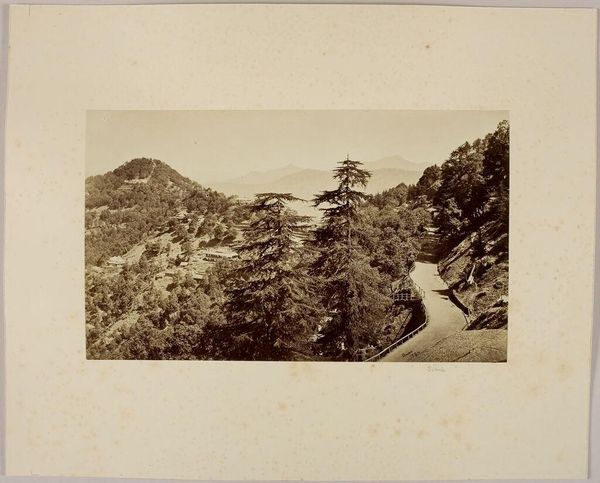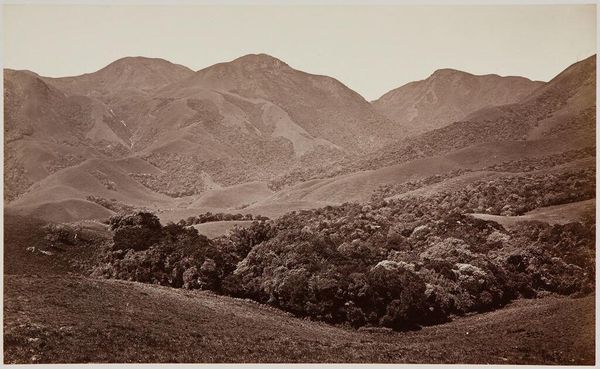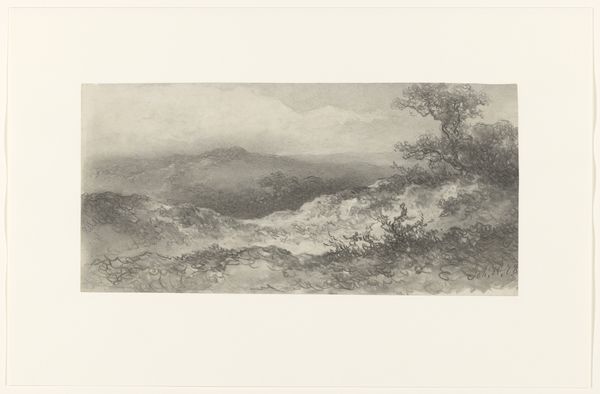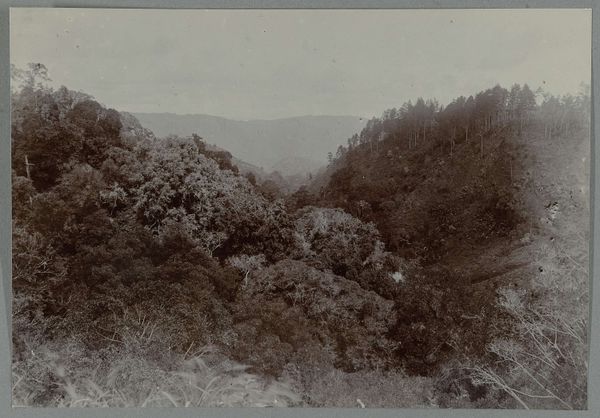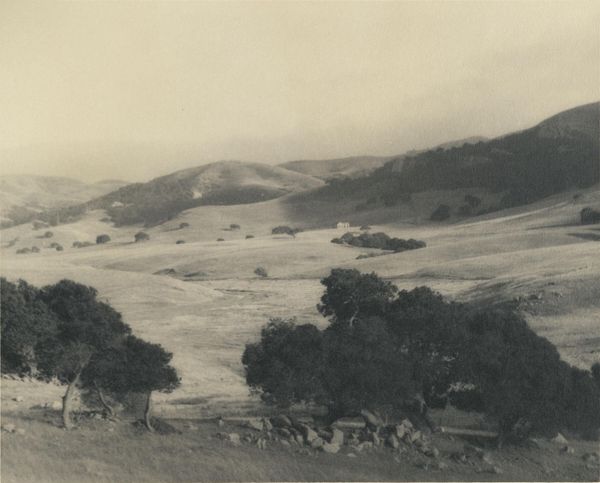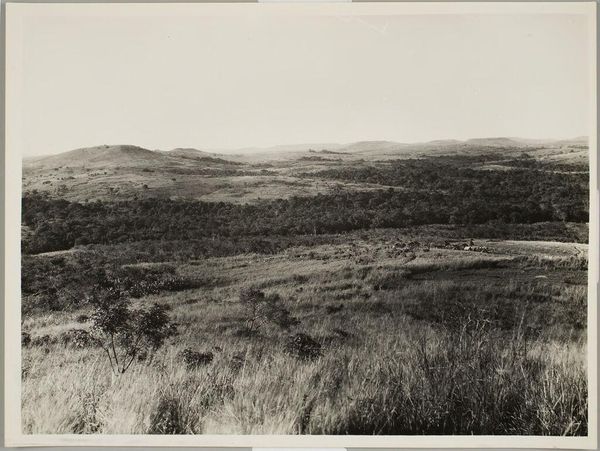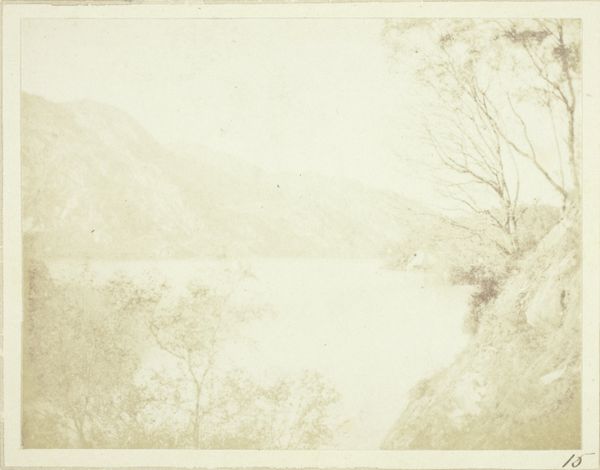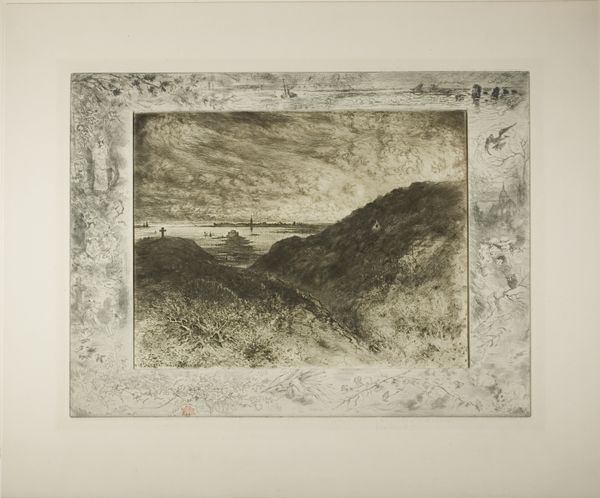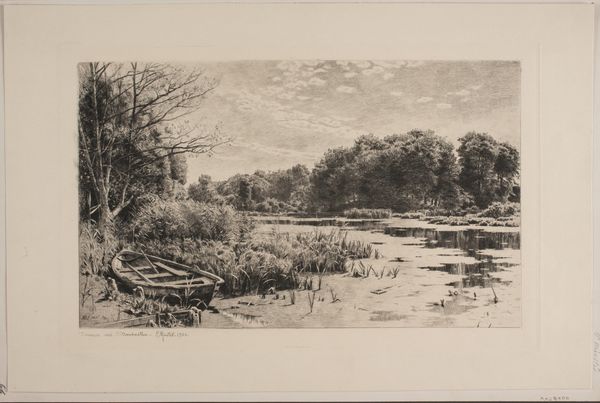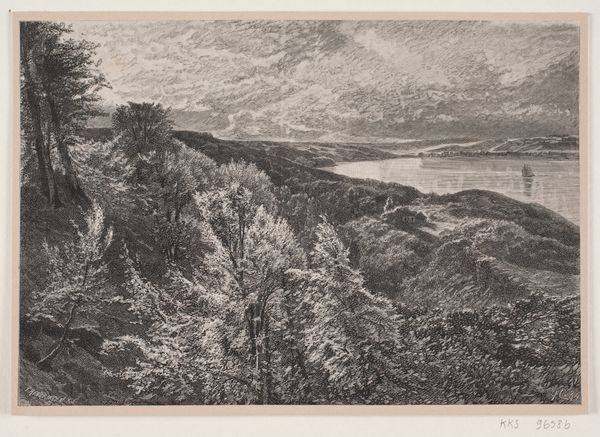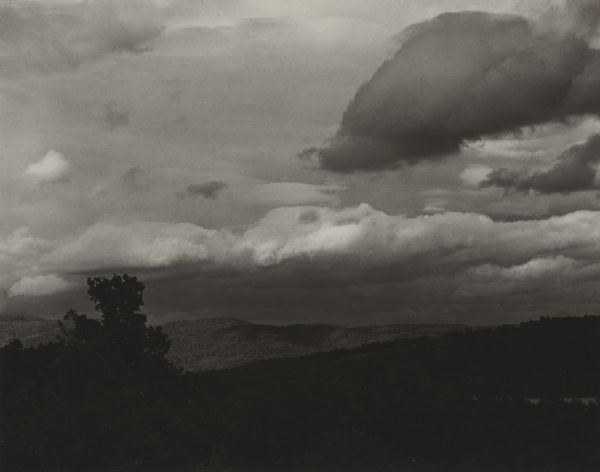
Rechter gedeelte van een panoramafoto met de Bromo en omgeving, Java, voormalig Nederlands-Indië 1903 - 1912
0:00
0:00
Dimensions: height 169 mm, width 234 mm
Copyright: Rijks Museum: Open Domain
Curator: We're looking at a gelatin silver print entitled "Rechter gedeelte van een panoramafoto met de Bromo en omgeving, Java, voormalig Nederlands-Indië", attributed to Onnes Kurkdjian, dating roughly from 1903 to 1912. It depicts a landscape scene. Editor: A blanket of fog hugs the space between ridges, a monochrome dream broken only by the rough foliage in the foreground. There is something sublime about its vastness. Curator: Indeed. The process here is critical; the gelatin silver printing process allowed for finer details and tonal ranges which is quite striking when examining the contrast between the light fog and the volcanic mountains. This landscape photography served a vital function, documenting colonized lands and making them accessible to European audiences. Editor: Let's not overlook how the composition guides our eyes. The way Kurkdjian employs depth, leading us from the sharply focused foreground to the blurred mountains creates a sense of distance but also brings into balance the relationship between observer and scene. The light creates almost an ethereal feel, elevating a simple shot. Curator: And that light wasn't merely aesthetic, of course. Silver gelatin prints depended upon light sensitivity of silver halides suspended in a gelatin layer, demanding skilled technicians and specific equipment in the field. What's captured here becomes more than the image, it reflects colonial ambition. Editor: While understanding the method matters, it also feels deeply personal to me. The way Kurkdjian plays with shadow and light gives me the feeling of something deeply spiritual in this place. Curator: Absolutely. Examining images such as this shows that the technology to create photography went hand in hand with the colonial structure to enable cultural consumption of the "exotic". Editor: So it’s a testament to photography itself; from craft, a technique used by many during that colonial period, all captured here with intention and visual strength.
Comments
No comments
Be the first to comment and join the conversation on the ultimate creative platform.
